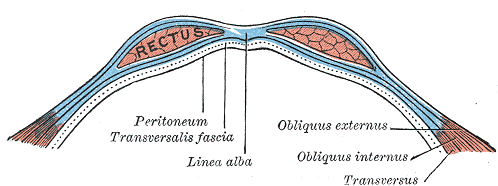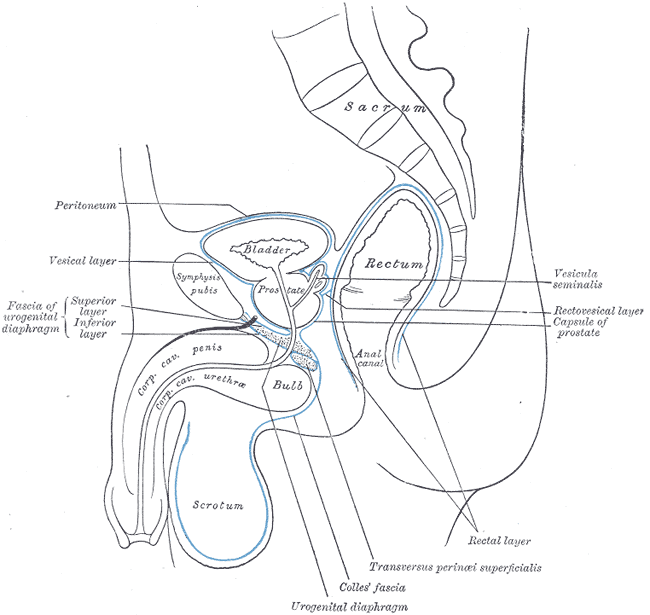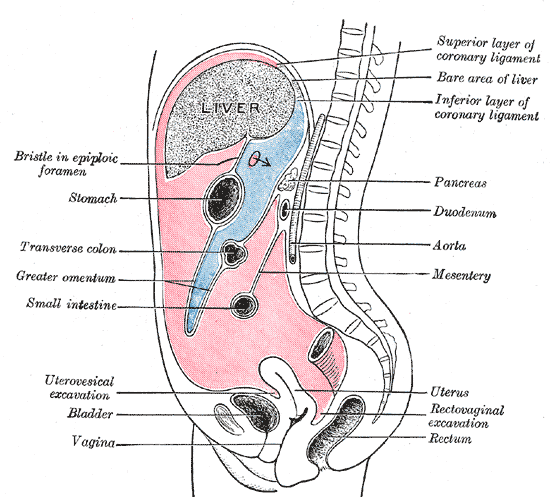[1]
Pannu HK, Oliphant M. The subperitoneal space and peritoneal cavity: basic concepts. Abdominal imaging. 2015 Oct:40(7):2710-22. doi: 10.1007/s00261-015-0429-5. Epub
[PubMed PMID: 26006061]
[2]
Blackburn SC, Stanton MP. Anatomy and physiology of the peritoneum. Seminars in pediatric surgery. 2014 Dec:23(6):326-30. doi: 10.1053/j.sempedsurg.2014.06.002. Epub 2014 Jun 4
[PubMed PMID: 25459436]
[3]
Solass W, Horvath P, Struller F, Königsrainer I, Beckert S, Königsrainer A, Weinreich FJ, Schenk M. Functional vascular anatomy of the peritoneum in health and disease. Pleura and peritoneum. 2016 Sep 1:1(3):145-158. doi: 10.1515/pp-2016-0015. Epub 2016 Oct 4
[PubMed PMID: 30911618]
[4]
Sheehan D. The Afferent Nerve Supply of the Mesentery and its Significance in the Causation of Abdominal Pain. Journal of anatomy. 1933 Jan:67(Pt 2):233-49
[PubMed PMID: 17104420]
[5]
Yang XF, Liu JL. Anatomy essentials for laparoscopic inguinal hernia repair. Annals of translational medicine. 2016 Oct:4(19):372
[PubMed PMID: 27826575]
[6]
Salti GI, Naffouje SA. Feasibility of hand-assisted laparoscopic cytoreductive surgery and hyperthermic intraperitoneal chemotherapy for peritoneal surface malignancy. Surgical endoscopy. 2019 Jan:33(1):52-57. doi: 10.1007/s00464-018-6265-2. Epub 2018 Jun 20
[PubMed PMID: 29926165]
Level 2 (mid-level) evidence
[7]
Loftus TJ, Morrow ML, Lottenberg L, Rosenthal MD, Croft CA, Smith RS, Moore FA, Brakenridge SC, Borrego R, Efron PA, Mohr AM. The Impact of Prior Laparotomy and Intra-abdominal Adhesions on Bowel and Mesenteric Injury Following Blunt Abdominal Trauma. World journal of surgery. 2019 Feb:43(2):457-465. doi: 10.1007/s00268-018-4792-6. Epub
[PubMed PMID: 30225563]
[9]
Muysoms FE, Antoniou SA, Bury K, Campanelli G, Conze J, Cuccurullo D, de Beaux AC, Deerenberg EB, East B, Fortelny RH, Gillion JF, Henriksen NA, Israelsson L, Jairam A, Jänes A, Jeekel J, López-Cano M, Miserez M, Morales-Conde S, Sanders DL, Simons MP, Śmietański M, Venclauskas L, Berrevoet F, European Hernia Society. European Hernia Society guidelines on the closure of abdominal wall incisions. Hernia : the journal of hernias and abdominal wall surgery. 2015 Feb:19(1):1-24. doi: 10.1007/s10029-014-1342-5. Epub 2015 Jan 25
[PubMed PMID: 25618025]
[10]
Kurek Eken M, Özkaya E, Tarhan T, İçöz Ş, Eroğlu Ş, Kahraman ŞT, Karateke A. Effects of closure versus non-closure of the visceral and parietal peritoneum at cesarean section: does it have any effect on postoperative vital signs? A prospective randomized study. The journal of maternal-fetal & neonatal medicine : the official journal of the European Association of Perinatal Medicine, the Federation of Asia and Oceania Perinatal Societies, the International Society of Perinatal Obstetricians. 2017 Apr:30(8):922-926. doi: 10.1080/14767058.2016.1190826. Epub 2016 Sep 5
[PubMed PMID: 27187047]
Level 1 (high-level) evidence
[11]
Bektasoglu HK, Hasbahceci M, Yigman S, Yardimci E, Kunduz E, Malya FU. Nonclosure of the Peritoneum during Appendectomy May Cause Less Postoperative Pain: A Randomized, Double-Blind Study. Pain research & management. 2019:2019():9392780. doi: 10.1155/2019/9392780. Epub 2019 May 23
[PubMed PMID: 31249637]
Level 1 (high-level) evidence
[12]
Stenberg E, Szabo E, Ågren G, Ottosson J, Marsk R, Lönroth H, Boman L, Magnuson A, Thorell A, Näslund I. Closure of mesenteric defects in laparoscopic gastric bypass: a multicentre, randomised, parallel, open-label trial. Lancet (London, England). 2016 Apr 2:387(10026):1397-1404. doi: 10.1016/S0140-6736(15)01126-5. Epub 2016 Feb 16
[PubMed PMID: 26895675]
Level 1 (high-level) evidence
[13]
Pericleous M, Sarnowski A, Moore A, Fijten R, Zaman M. The clinical management of abdominal ascites, spontaneous bacterial peritonitis and hepatorenal syndrome: a review of current guidelines and recommendations. European journal of gastroenterology & hepatology. 2016 Mar:28(3):e10-8. doi: 10.1097/MEG.0000000000000548. Epub
[PubMed PMID: 26671516]
[14]
Mandavdhare HS, Sharma V, Singh H, Dutta U. Underlying etiology determines the outcome in atraumatic chylous ascites. Intractable & rare diseases research. 2018 Aug:7(3):177-181. doi: 10.5582/irdr.2018.01028. Epub
[PubMed PMID: 30181937]



